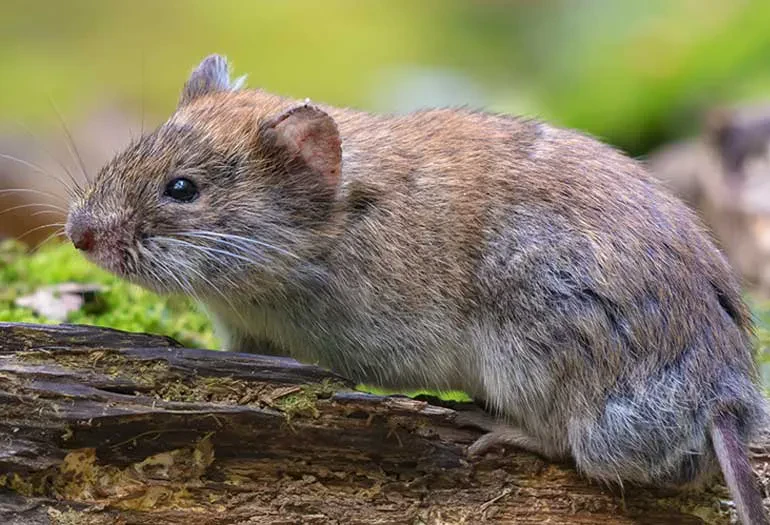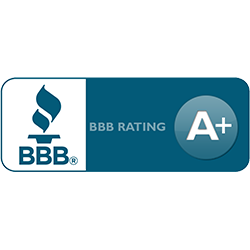Vole Pest Control
Voles are small rodents under the family Cricetidae alongside hamsters and lemmings. The history of voles is intertwined with the broader history of rodents and their evolutionary development that spans millions of years. As a group, the rodents are expected to have originated shortly after the dinosaur extinction – roughly around 65 million years ago. They were small, mouse-sized animals that inhabited forested environments. However, they have diversified into various ecological niches over time.
The family Cricetidae emerged around 8 to 10 million years ago with family members like hamsters, lemmings, mice, rats, and voles. Voles have continuously evolved into new species and have even expanded their habitual range. Though they are an important component in the ecosystem by serving as prey for a variety of predators, they also contribute to vegetation patterns and soil health. Due to their ability to damage crops and gardens, voles are considered a pest and need elimination if caught. Farmers and gardeners apply numerous control measures to work on vole-related issues. Apart from these, they are used in scientific research as well.
In case of a vole interaction, you immediately need to contact a licensed pest control service like Pratt Termite & Pest Control, Inc. at 402-691-2920 for the elimination.
Voles Vs. Mouse
Voles are often mistaken for mice or rats due to their similar appearances but there are some distinct characteristics of both to set them apart. They have different sizes, and appearances, different habitats and behaviors, different diets, the cycle of reproduction, taxonomy, diversity, etc.
Though they are different, it is important to know that their elimination works best for you and your lifestyle.
Voles Vs. Mole
Like the differences with a mouse, voles are also different from moles but are often confused together because of their similar sounding names and subterranean lifestyles. But they are very different mammals with different appearances, habitats, diets, ecological roles, and conservation status. While voles have stockier bodies with short legs and tails, moles are cylindrical with short legs and powerful forelimbs for digging. They also have large, shovel-like front paws and lack external ears.
While dealing with them, it is in the best interest to not be confused for the sake of treatment options. But whichever one has infested the area; it is crucial that you call for mole and vole control services for help.
What kind of voles are found in Omaha?
Voles are commonly found in North America, Europe, and Asia. As per Omaha, Nebraska, Meadow Vole (Microtus pennsylvanicus) is the most common vole found around the area. However, there are some other species like Prairie Vole (Microtus Ochrogaster), Woodland Vole (Microtus pinetorum), Long-tailed Vole (Microtus longicaudus), etc.
The population and distribution might be different but there are other species of voles around which hasn’t yet been identified by local field guides and professionals.
Is vole control necessary?
Yes, voles can cause damage to crops and fields with their feeding habits like gnawing on plant stems and roots. This leads to reduced crop yields, compromised plant health, and finally, economic losses for farmers. They are also a threat to your gardens, orchards, and ornamental plants. They feed on roots, bulbs, and other lower parts of plants which causes the plants to stunted growth and even death in some cases. In addition to that, landscapes can experience aesthetic deterioration.
Likewise, if voles start impacting other wildlife or infrastructures, it might pose a threat. They can disrupt the stability of structures like roads, dikes, leaves, etc. They can even carry diseases that can affect humans and live stocks. The most common diseases to human that might be transmitted to humans from voles are hantavirus, tularemia, and fleas.
We strongly recommend you contact a local vole control for the elimination of voles from your house or surrounding area.
How to control voles?
We typically start our operation for controlling voles with an inspection. There are professional and licensed officials who inspect the property by looking at the signs of activity to get to the identification. Then, we find out the species of voles that have infested the area and make a customized control plan for their mitigation.
Afterward, we look for habitat modification like trimming vegetation, removing clutter, altering irrigation, etc. They actively reduce the food and cover for voles resulting in less attraction for the future. We also add physical barriers and fencing for the exclusion and traps if someone decides to show up.
Finally, we apply some repellants and monitor the areas regularly for effective voles control and management of sanity.
Frequently Asked Questions (FAQs)
- How to know if I have a vole infestation?
You will notice some small tunnels in the ground known as vole burrows around your house if you have a vole infestation. Additionally, there might be runways on the surface, gnawed vegetation, and droppings that resemble small pellets. Damage to crops or gardens also indicates vole infestation.
- Can I conduct voles pest control at home?
A home remedy might be effective for a small-scale vole infestation but if the infestation is larger, we recommend you take help from a professional.
- How much do pest control voles cost?
In general, pest control for voles can cost from a few hundred dollars to several thousand if the infestation is severe.
- How long does it take to conduct pest control for voles?
The duration of pest control for voles depends on the extent and severity of the infestation. The duration includes the whole initial assessment, control plan development process, implementation of control measures, and monitoring plus follow-up operations.
- Are vole repellents effective?
Repellents might be helpful to get rid of voles but their effectiveness might vary and they often require regular reapplication. You can only find out the effectiveness of various repellents after consulting with a licensed professional.
- How dangerous are vole repellents?
There are some dangerous repellents in the market alongside some general ones too. It is vital that you carefully read the instructions and consider any risks that might arise midways.
- How do I make sure that I am contacting a reliable pest control service?
When you look for a pest control service, make sure that you look at the experience level, reputation, and knowledge for vole control methods. You also need to do thorough research and request references, read reviews, and compare services, and prices before making the decision.





